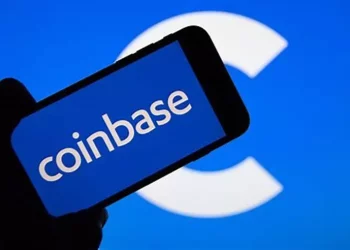In the ever-expanding landscape of blockchain technology, Binance Smart Chain (BSC) has emerged as a prominent player, offering a versatile platform for decentralized applications (DApps) and digital asset exchange. Launched by Binance, one of the leading cryptocurrency exchanges globally, BSC aims to provide a scalable and efficient infrastructure for developers and users alike. In this comprehensive guide, we delve into the intricacies of Binance Smart Chain, exploring its architecture, features, advantages, and the ecosystem built around it.
Understanding Binance Smart Chain: An Overview
Binance Smart Chain, introduced in September 2020, represents Binance’s foray into the realm of smart contract platforms. Unlike its predecessor, Binance Chain, which primarily focuses on fast and low-cost transactions for trading cryptocurrencies, BSC is designed to support smart contracts and decentralized applications, making it a direct competitor to Ethereum and other similar platforms.
At its core, Binance Smart Chain is a blockchain platform that enables developers to create decentralized applications and deploy smart contracts. It operates in parallel with Binance Chain, utilizing a dual-chain architecture to maintain compatibility with the existing Binance ecosystem while offering enhanced functionality for developers and users.
Key Features of Binance Smart Chain
EVM Compatibility:
One of the standout features of Binance Smart Chain is its compatibility with the Ethereum Virtual Machine (EVM). This means that developers can easily port their existing Ethereum-based DApps and smart contracts to BSC with minimal modifications, thereby leveraging the existing developer tools, libraries, and resources available in the Ethereum ecosystem.
Proof-of-Stake Consensus Mechanism:
BSC employs a proof-of-stake (PoS) consensus mechanism known as Proof of Staked Authority (PoSA). In PoSA, a set of validators, known as the Binance Chain Validators (BCVs), are responsible for validating transactions and securing the network. Validators are chosen based on their stake in BNB, the native cryptocurrency of Binance Chain and Binance Smart Chain.
High Performance and Low Fees:
Binance Smart Chain is designed to offer high throughput and low latency, enabling fast transaction processing and confirmation times. Moreover, the network boasts significantly lower transaction fees compared to Ethereum, making it more cost-effective for users and developers, especially during periods of network congestion.
Cross-Chain Compatibility:
BSC supports cross-chain interoperability, allowing assets to be transferred seamlessly between Binance Chain and Binance Smart Chain. This enables users to access a wide range of assets and liquidity pools across both chains, enhancing the overall utility and usability of the Binance ecosystem.
Decentralized Finance (DeFi) Ecosystem:
Binance Smart Chain has emerged as a popular platform for decentralized finance (DeFi) applications, offering a vibrant ecosystem of lending and borrowing protocols, decentralized exchanges (DEXs), yield farming platforms, and more. Projects like PancakeSwap, Venus, and BakerySwap have gained significant traction on BSC, attracting users and liquidity from across the cryptocurrency community.
Advantages of Binance Smart Chain
Scalability:
With its high throughput and low latency, Binance Smart Chain is well-suited for applications that require fast transaction processing and scalability. This makes it an attractive platform for DeFi projects, gaming applications, non-fungible token (NFT) marketplaces, and other high-demand use cases.
Cost-Effectiveness:
The low transaction fees on Binance Smart Chain make it an appealing choice for both developers and users, especially in comparison to the skyrocketing gas fees on Ethereum during periods of network congestion. This cost-effectiveness not only reduces the barrier to entry for developers but also enhances the accessibility of decentralized applications for end-users.
Ecosystem Support:
Binance Smart Chain benefits from the extensive ecosystem and user base of Binance, one of the largest cryptocurrency exchanges in the world. This provides developers with access to a wide range of resources, including funding, technical support, marketing assistance, and user acquisition, thereby fostering innovation and growth within the BSC ecosystem.
Interoperability:
The cross-chain compatibility of Binance Smart Chain enables seamless integration with other blockchain networks, facilitating asset transfers and interoperability between different platforms. This interoperability opens up new opportunities for collaboration and partnership across the broader blockchain ecosystem, driving adoption and innovation in the decentralized finance space.
Challenges and Limitations
While Binance Smart Chain offers numerous advantages, it also faces several challenges and limitations that warrant consideration:
Centralization Concerns:
BSC has been criticized for its relatively centralized governance model, with a limited number of validators controlling the network. This raises concerns about censorship resistance and decentralization, especially in comparison to more decentralized platforms like Ethereum.
Security Risks:
As with any blockchain platform, security remains a critical concern for Binance Smart Chain. While the network has not experienced any major security breaches or exploits thus far, the potential for vulnerabilities and attacks always exists, particularly as the ecosystem continues to grow and attract more attention from malicious actors.
Ecosystem Fragmentation:
The proliferation of multiple blockchain platforms, each with its own unique features and capabilities, has led to ecosystem fragmentation within the broader blockchain space. While interoperability initiatives aim to address this issue, interoperability remains a complex and evolving challenge that requires concerted efforts from developers, projects, and stakeholders across different networks.
Regulatory Uncertainty:
The regulatory landscape surrounding blockchain and cryptocurrencies remains uncertain and subject to change, with regulatory authorities around the world grappling with how to classify and regulate digital assets and decentralized applications. This regulatory uncertainty poses risks for projects and users operating within the Binance Smart Chain ecosystem, as regulatory actions could impact the legality and viability of certain activities and applications.
See also:Is China Using Cryptocurrency
The Future of Binance Smart Chain
Despite these challenges, Binance Smart Chain continues to grow and evolve, driven by the vision of fostering innovation and empowering developers to build the next generation of decentralized applications. Looking ahead, the future of BSC appears promising, with ongoing developments and initiatives aimed at enhancing scalability, security, and interoperability, while also addressing governance and decentralization concerns.
As blockchain technology continues to mature and gain mainstream adoption, Binance Smart Chain is poised to play a significant role in shaping the future of decentralized finance, digital asset exchange, and decentralized applications. By leveraging its unique features, strategic partnerships, and vibrant ecosystem, BSC has the potential to become a leading platform for innovation and collaboration in the decentralized economy of tomorrow.
In conclusion, Binance Smart Chain represents a compelling option for developers and users seeking a scalable, efficient, and cost-effective blockchain platform for building and interacting with decentralized applications. With its EVM compatibility, PoS consensus mechanism, low fees, and vibrant ecosystem, BSC offers a robust foundation for realizing the full potential of decentralized finance and blockchain technology. As the ecosystem continues to mature and evolve, Binance Smart Chain is poised to drive innovation, foster collaboration, and unlock new opportunities for growth and development in the decentralized economy.
Related topics:
What Does the Term Metaverse Mean
















